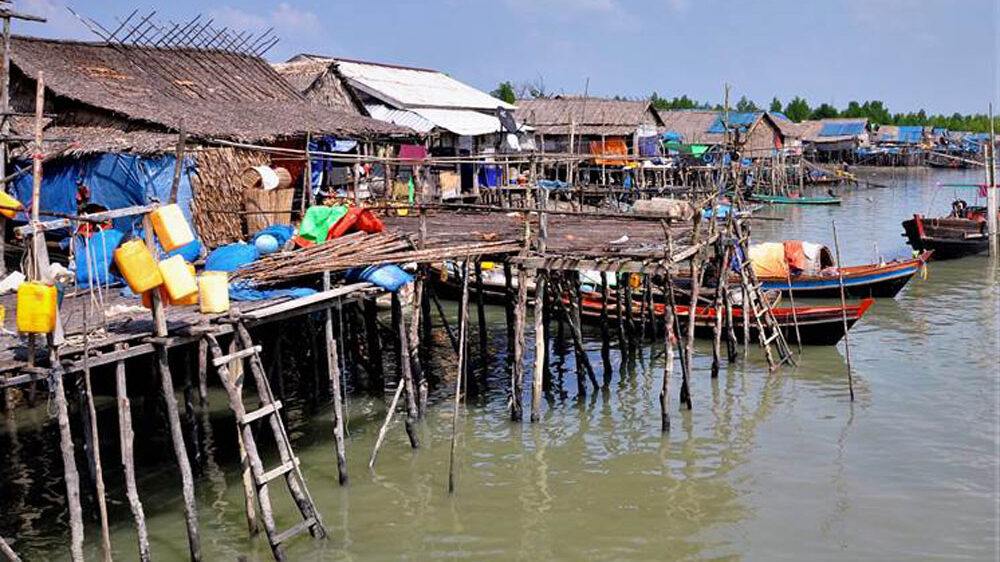Global production of plastics has increased 20-fold since the 1960s, reaching 359 million tonnes in 2018. By 2050, plastics production will account for 20% of total oil consumption, according to the World Economic Forum (WEF). Ten rivers carry more than 90% of the plastic waste that ends up in the oceans, eight in Asia and two in Africa, with marine plastic litter set to outweigh fish by 2050 barring effective action.
Even with all of these warning signs, 91% of plastic waste has not been recycled. The WEF estimates economic losses range from US$70 billion to $105 billion annually as landfilling and incineration rates remain high. Data from 2012 show that plastic production and the incineration of plastic waste contributes to approximately 400 million tonnes of CO2 each year.
The present solutions are not working now, much less sustainable in the future. When communities have implemented effective programmes, those lessons have too infrequently been replicated elsewhere. Effective recycling technology strategies have a long way to go, while top-to-bottom policy changes are needed to provide incentives within the plastic value chain. At each of these levels, innovation is needed, especially involving young students and professionals in the STEM disciplines.
There is a massive gap between people’s increasing awareness about the problem and actual changes in behaviour. Most consumers routinely use plastics in spite of their growing sensitization about hazardous plastic waste. As one example, Thai consumers on average use eight plastic bags each day, which is equivalent nationally to almost 200 billion per year.
There are policy solutions, however, that are already influencing consumers. Another survey about behavioural change in England showed that a small charge for bags had profound effect for low-income families, although high-income households demonstrated less behavioural change. The example shows that solutions need to be tailored to communities and demographics, particularly to find inducements for higher-income groups so that poorer consumers do not bear the brunt.
Similarly, existing technological solutions are not always as effective as the public presumes. Plastic recycling is complicated, with daily-use products made from a variety of polymer materials, so proper identification is essential to increase recycling rates. Coloured plastics complicate the task because they have to be separated, while incidental contamination by additives is another problem.
The most well-established technology is mechanical recycling. Once separated by colour, thermoplastic waste is cleaned, ground, dried and melted in material recovery facilities, after which it is reshaped into recycled products. At present, however, most mechanical recycling is at small to medium-sized facilities with limited automation, which are too fragmented and uncoordinated to have impact at scale. There is no evidence that this form of recycling makes a significant environmental impact at present because of electricity consumption as well as by-products such as plastic dust and other effluents.
New chemical-recycling technologies are emerging to address the limitations of the mechanical processes, including pyrolysis, which involves decomposing plastic materials by heat in an oxygen-free environment to produce oil and gas. In spite of its high cost, pyrolysis is attractive because it converts valueless plastic waste such as single-use bags and food wrappers into multi-purpose products.
A European Commission study published in 2018 indicated that weak demand for recycled plastics is one of the major obstacle to transform the recycling value chain. Producers fear recycled plastic will not meet their needs for a constant-volume supply of materials with high-quality specifications. As a result, investments in the infrastructure of recycling and innovations in product design have been limited.
In reality, people will continue to use these types of products to some degree despite the drawbacks. Bioplastics or biodegradable plastics, however, have been developed with potentially lower environmental impacts and decrease dependency on fossil fuels. Alternative hydrocarbon plastics, such as bio-based biodegradable polymers, might eventually replace the majority of traditional consumer plastics and the promising bioplastic market encourages further research. At present, these products represent only a small share of the market.
The simple truth is that effective solutions will not be achieved by market mechanisms alone, which do not take into account social costs. Policy shifts to reduce plastic consumption are essential to achieve progress. As of July 2018, UNEP found that only 27 countries taxed the manufacture and production of single-use plastic bags, with Vanuatu implementing the most stringent measures, while 30 mandated charges for single-use bags. At the beginning of this year, Thailand launched its own ban on single-use bags at most shopping malls and convenience stores, although enforcement has not been perfect.
In addition to restricting or banning plastics, monitoring, inspecting and controlling imports are crucial. The Chinese government implemented restrictions on plastic bags in 2008, but only 17% of retail outlets implemented a surcharge, according to the Zero Waste Alliance, and most retailors still provide plastic bags for free except large-scale supermarkets and nationwide franchises. Rwanda provides a more comprehensive example with a ban on shopping bags coming into effect in 2004, followed by the prohibition of manufacturing, importation, use and sale of packaging plastics in 2008. All of these measures have been enforced, along with community outreach, social media campaigns and educational programmes to raise awareness.
These are the goals of the Plastic Initiative developed by the UNESCO Bangkok Office and launched in Hanoi in March 2019. This project seeks to provide a regional comprehensive approach to plastic-waste management throughout Asia-Pacific region by engaging and mobilizing communities, especially in fields such as environmental management, materials sciences, engineering and other STEM disciplines. Being aware of the issue of plastic pollution and using their capacity for action, young people, professionals and academics are encouraged to propose grassroots projects and best practices in their communities, which will be tested in UNESCO’s Biosphere Reserves and replicated in other areas when possible. This is an opportunity for the public to make their voices heard on this crucial issue.
In each of these areas, innovation must play a crucial role and, in a very short time, the youth of today will be the policy-makers of tomorrow. As environmental advocates within their community and future leaders, their awareness and intergenerational knowledge could be a catalyst for change.
About the author: Ying Jin is a former intern in UNESCO Bangkok’s Natural Sciences Unit and recent graduate of the Diploma of Engineering programme at Ecole Nationale Supérieure de Chimie de Paris.


